Abstract
OBJECTIVES--To study the long term effects of participation in the United Kingdom's atmospheric nuclear weapon tests and experimental programmes and to test hypotheses generated by an earlier report, including the possibility that participation in tests caused small hazards of leukaemia and multiple myeloma. DESIGN--Follow up study of mortality and cancer incidence. SUBJECTS--21,358 servicemen and civilians from the United Kingdom who participated in the tests and a control group of 22,333 non-participants. MAIN OUTCOME MEASURES--Numbers of deaths; standardised mortality ratios; relative risks of mortality from all causes and 27 types of cancer. RESULTS--During seven further years of follow up the numbers of deaths observed in participants were fewer than expected from national rates for all causes, all neoplasms, leukaemia, and multiple myeloma (standardised mortality ratios 0.86, 0.85, 0.57, and 0.46); death rates were lower than in controls (relative risks 0.99, 0.96, 0.57, and 0.57; 90% confidence intervals all included 1.00). In the period more than 10 years after the initial participation in tests the relative risk of death in participants compared with controls was near unity for all causes (relative risk 0.99 (0.95 to 1.04) and all neoplasms (0.95 (0.87 to 1.04)); it was raised for bladder cancer (2.69 (1.42 to 5.20)) and reduced for cancers of the mouth, tongue, and pharynx (0.45 (0.22 to 0.93)) and for lung cancer (0.85 (0.73 to 0.99)). For leukaemia mortality was equal to that expected from national rates but greater than in controls for both the whole follow up period (1.75 (1.01 to 3.06)) and the period 2-25 years after the tests (3.38 (1.45 to 8.25)). CONCLUSION--Participation in nuclear weapon tests had no detectable effect on expectation of life or on subsequent risk of developing cancer or other fatal diseases. The excess of leukaemia in participants compared with controls seems to be principally due to a chance deficit in the controls, but the possibility that participation in the tests may have caused a small risk of leukaemia in the early years afterwards cannot be ruled out.
Full text
PDF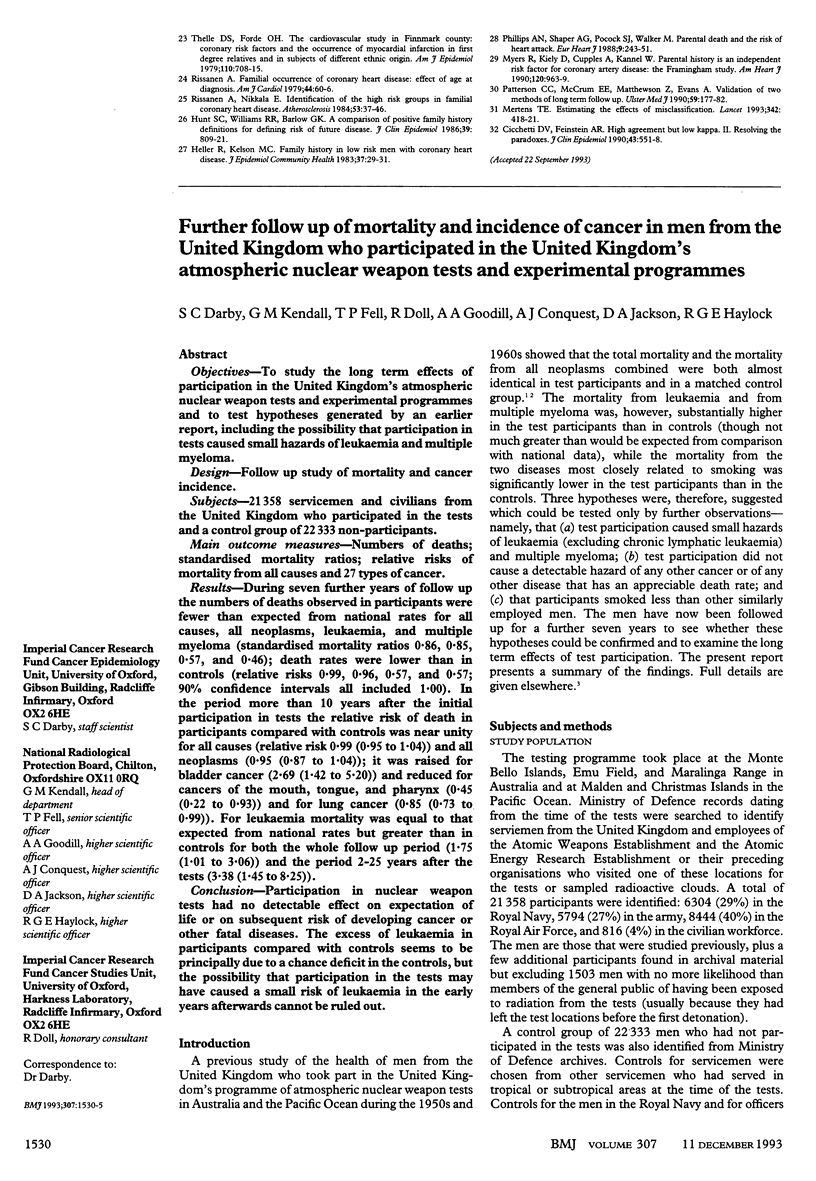
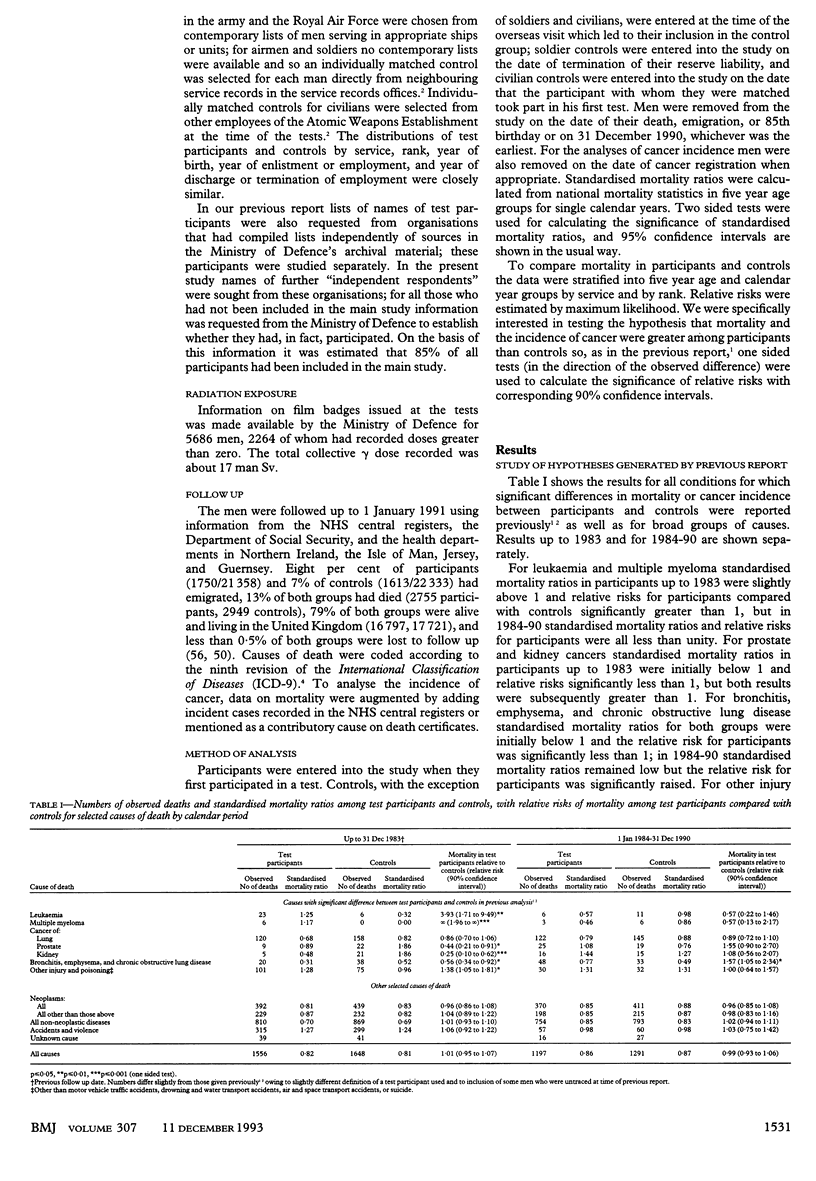
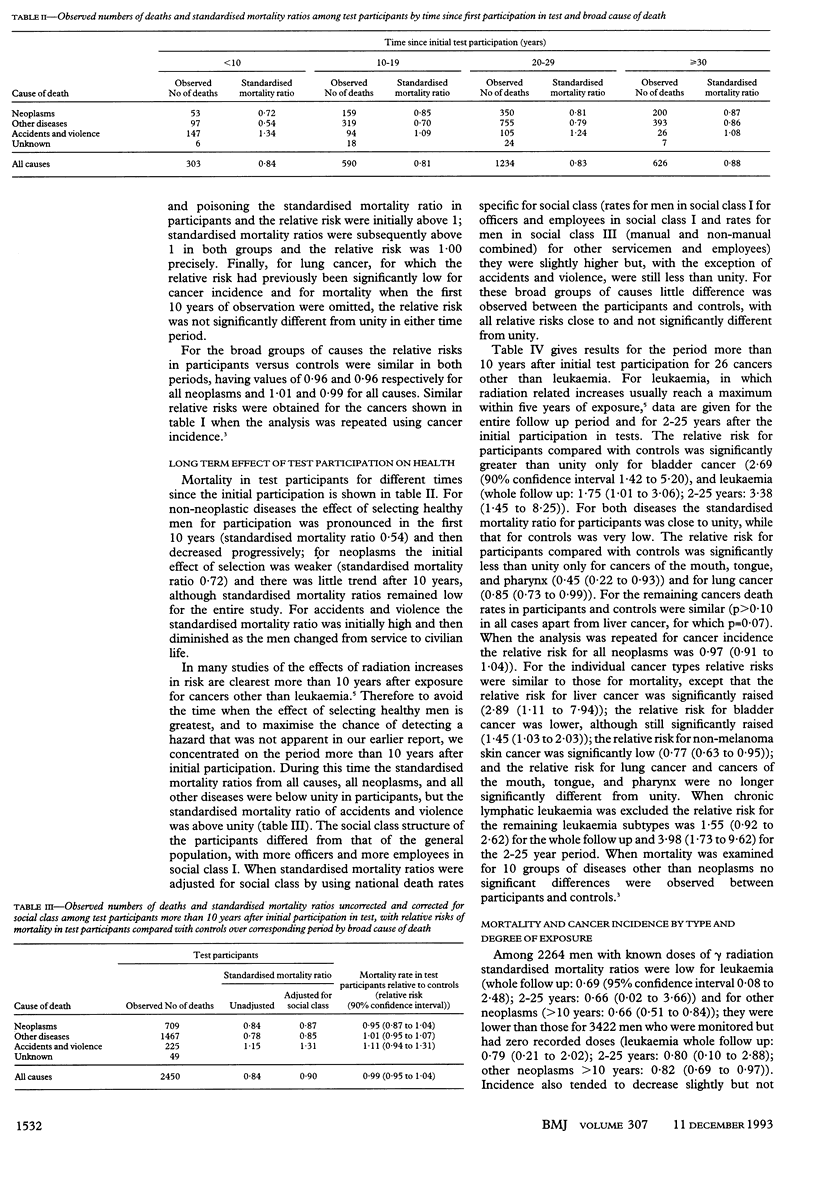
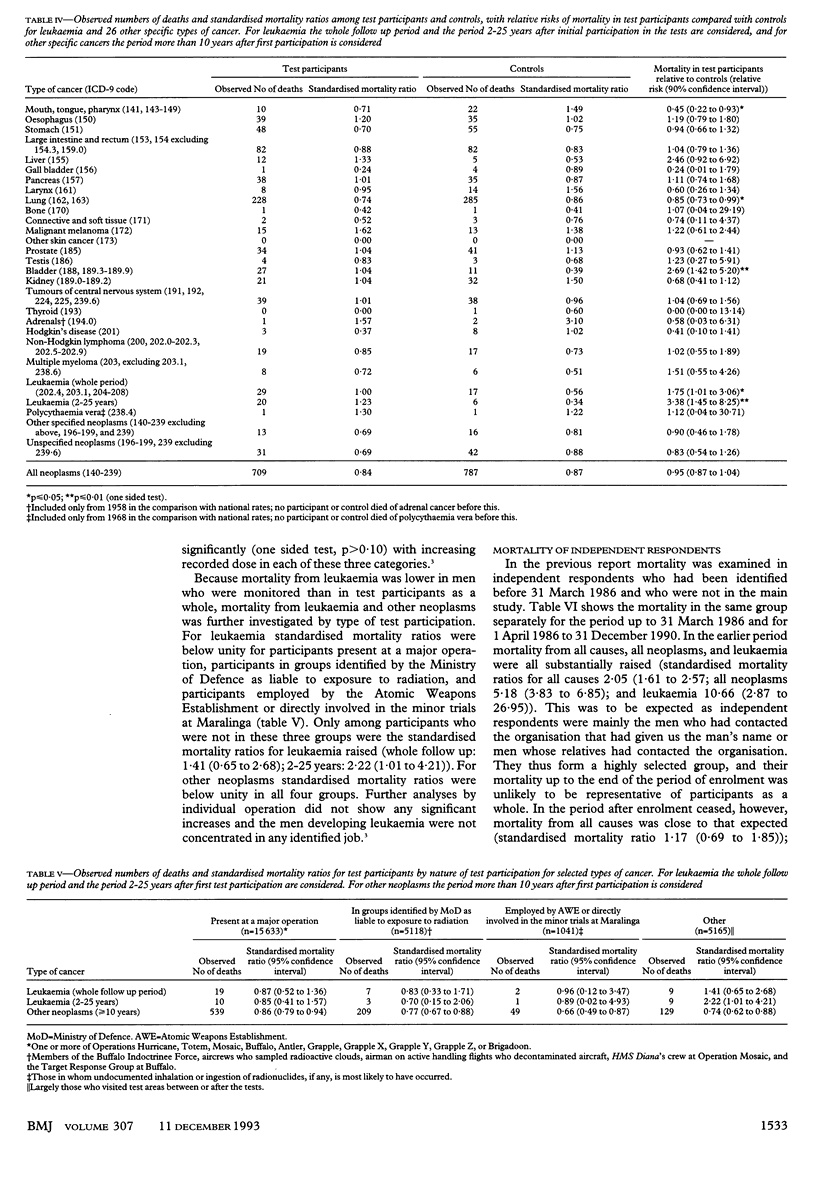
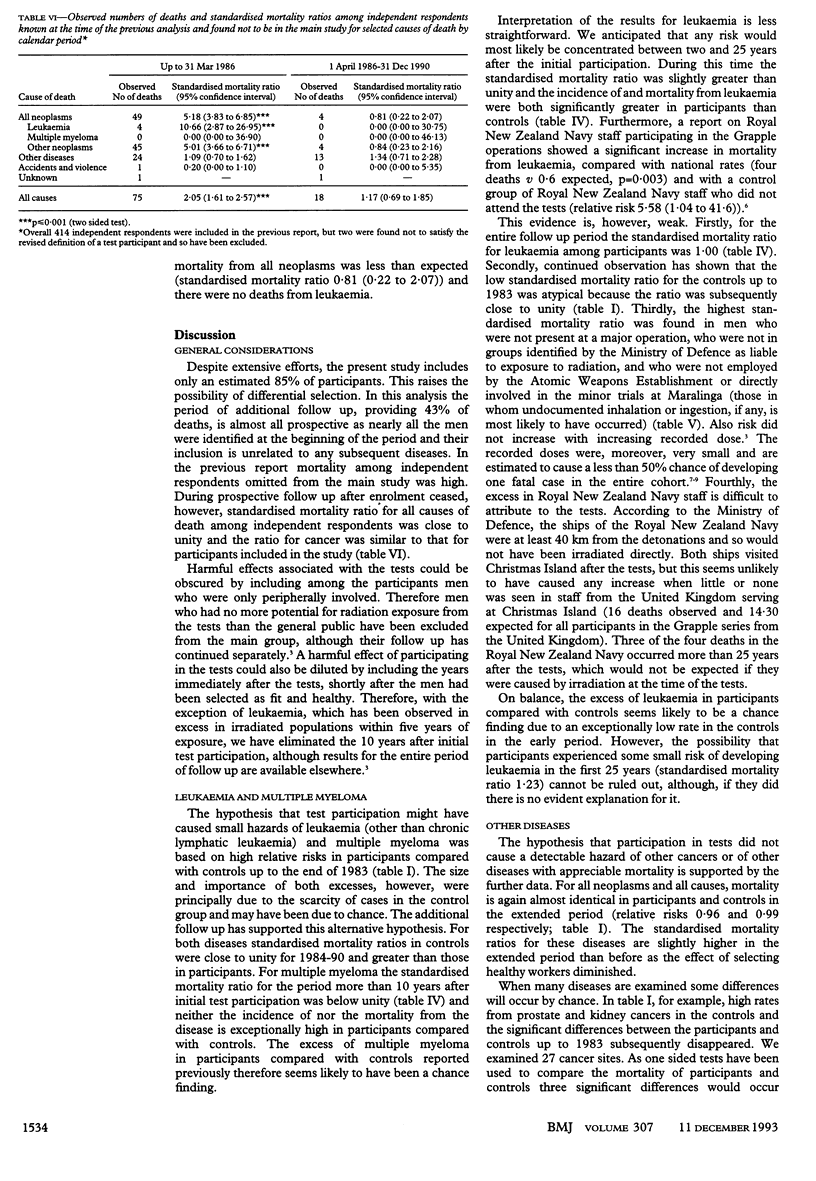
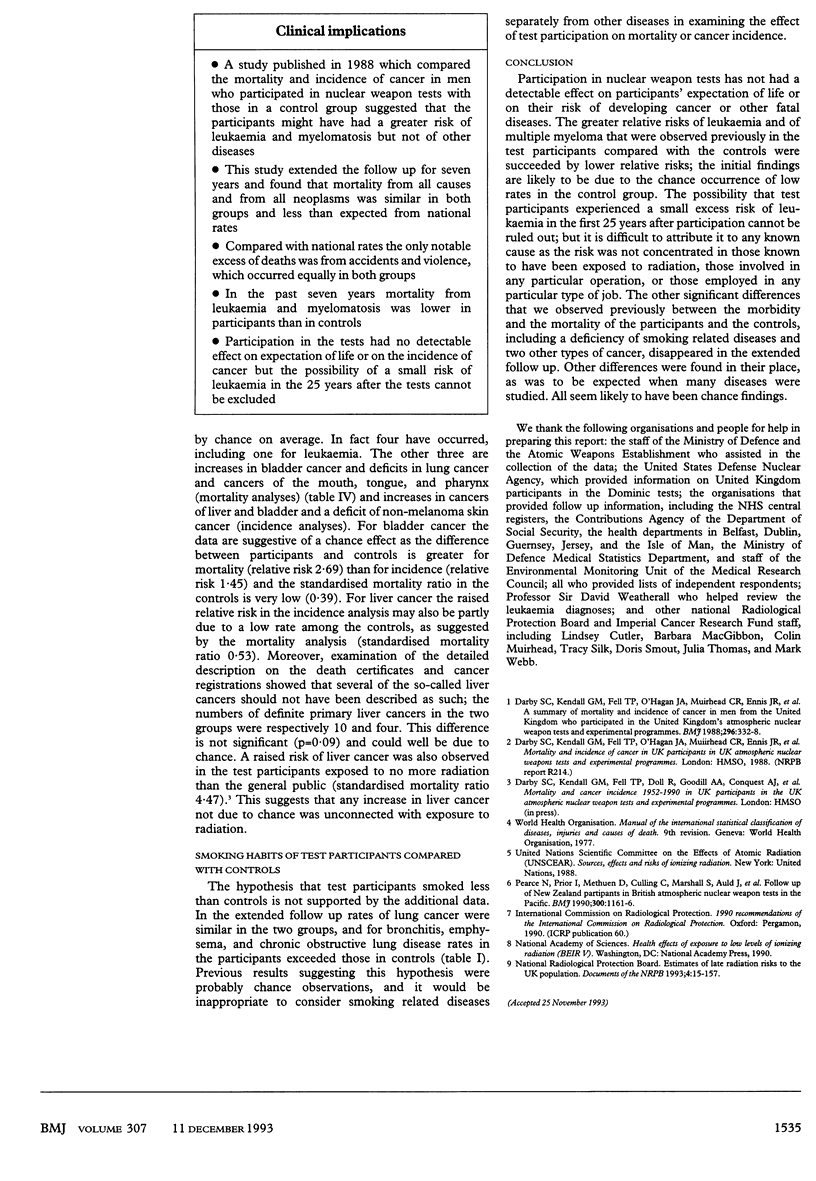
Selected References
These references are in PubMed. This may not be the complete list of references from this article.
- Darby S. C., Kendall G. M., Fell T. P., O'Hagan J. A., Muirhead C. R., Ennis J. R., Ball A. M., Dennis J. A., Doll R. A summary of mortality and incidence of cancer in men from the United Kingdom who participated in the United Kingdom's atmospheric nuclear weapon tests and experimental programmes. Br Med J (Clin Res Ed) 1988 Jan 30;296(6618):332–338. doi: 10.1136/bmj.296.6618.332. [DOI] [PMC free article] [PubMed] [Google Scholar]
- Pearce N., Prior I., Methven D., Culling C., Marshall S., Auld J., de Boer G., Bethwaite P. Follow up of New Zealand participants in British atmospheric nuclear weapons tests in the Pacific. BMJ. 1990 May 5;300(6733):1161–1166. doi: 10.1136/bmj.300.6733.1161. [DOI] [PMC free article] [PubMed] [Google Scholar]


